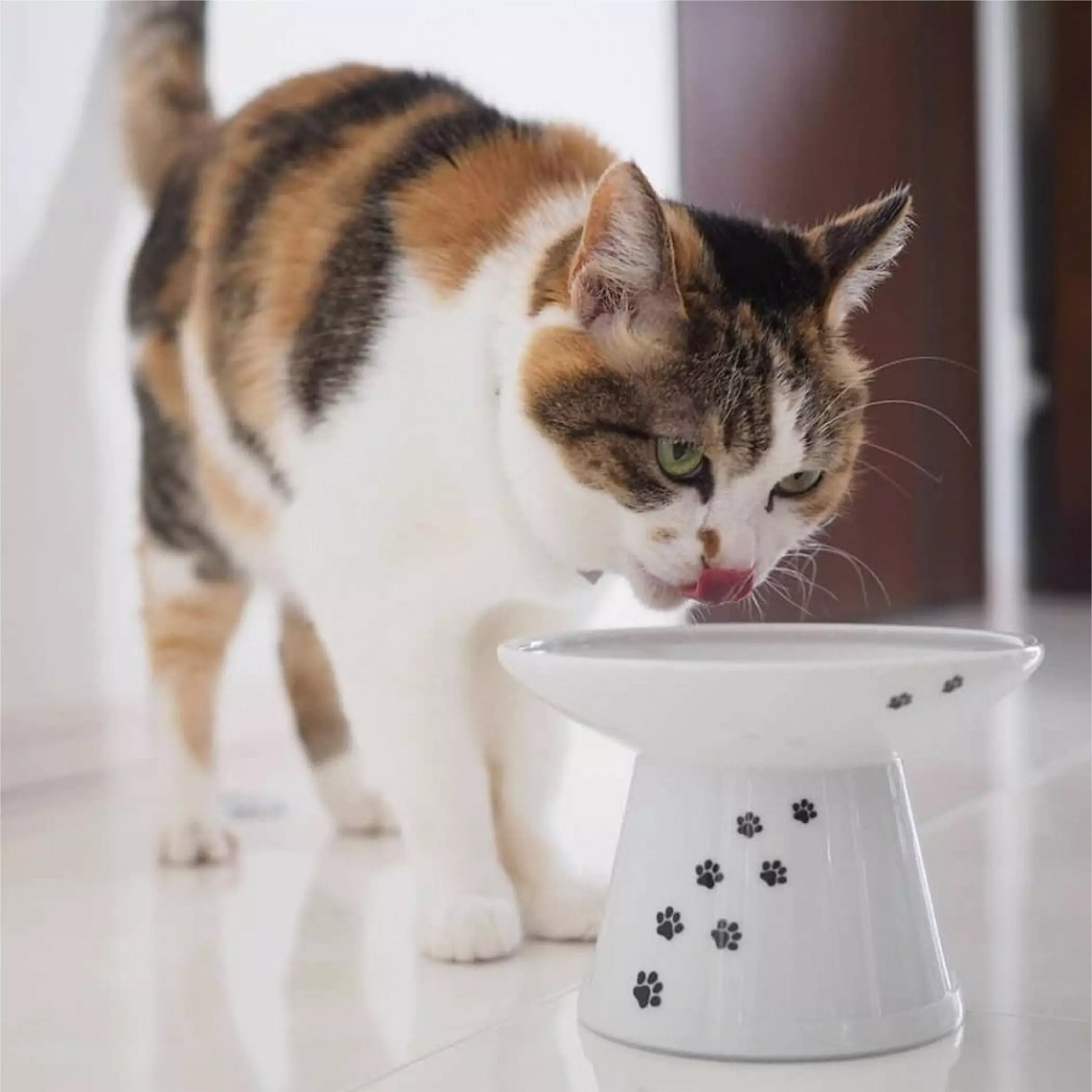Whisker fatigue is a condition that many cat owners might not be aware of, yet it can significantly affect a cat’s eating behavior. Essentially, it occurs when a cat’s sensitive whiskers become overstimulated. Whiskers, or vibrissae, are not merely decorative; they are critical sensory organs that help cats navigate their environment. When cats interact with their food and water dishes, the friction against these sensitive hairs can send numerous sensory signals to the brain, leading to discomfort. Dr. Keyes from Cat Vet Tucson explains that this sensory overload can manifest in various behavioral issues, prompting owners to question their cat’s health and demeanor.
The Natural Role of Whiskers
In the wild, a cat’s whiskers play an essential role in survival. They help felines gauge their surroundings, allowing them to determine whether they can fit through openings or sense nearby objects. Unlike domesticated cats, wild cats hunt for their food without the confines of a bowl. Therefore, their whiskers do not encounter the constant contact that happens with pet cats’ feeding situations. This natural behavior provides insight into why some cats may develop whisker fatigue when they eat from traditional bowls, as they are not accustomed to such interactions.
Recognizing the Signs
Identifying whisker fatigue in your feline friend is crucial for intervention. Some common indicators to look for include:
– **Refusal to Eat or Drink:** A cat may turn its nose up at its preferred food, signaling discomfort when using its bowl.
– **Bizarre Behavior:** Cats pacing in front of their food dishes and vocalizing distress can be a telltale sign of unease due to whisker irritation.
– **Pawing at Food:** When a cat uses its paws to attempt to drag food out of the bowl, it may indicate that their whiskers are uncomfortable when touching the bowl’s sides.
– **Increased Aggression:** A cat may also show signs of agitation or aggression around food, particularly when it is presented in a traditional bowl that triggers whisker fatigue.
Recognizing these signs can help pet owners take action before the situation worsens.
After noticing changes in their cat’s behavior, many owners have tried various feeding solutions to minimize whisker fatigue. Among these, the Necoichi extra-wide ceramic bowls have received positive anecdotes from countless pet owners, including myself. These bowls are designed to alleviate the discomfort associated with whisker fatigue while simultaneously enhancing the feeding experience. The wider design allows for less contact with the whiskers while the food naturally aggregates towards the center due to the bowl’s unique shape, resolving the hassle of half-empty bowls.
Additionally, the choice of material plays a significant role in a cat’s health. Unlike composite materials or plastic, which can harbor bacteria causing feline acne, the ceramic used by Necoichi is not only easier to clean but also safer for long-term use. Such materials prevent the complications that often arise from less hygienic feeding equipment, creating a healthier eating environment.
Another innovative aspect of the Necoichi design is the raised bowl feature. Elevating a cat’s food not only reduces the chances of whisker fatigue but also assists with digestion, especially important for cats prone to vomiting. DVM Catherine Barnette emphasizes that gravity helps facilitate food movement from the mouth to the stomach, promoting better health in felines.
Design Options for Every Cat
The Necoichi bowls come in several aesthetically pleasing designs, allowing pet owners to choose something that fits their home decor while meeting their cat’s needs. From classic styles to themed designs featuring the brand’s mascot, the diversity ensures that the needs of every cat—and owner—can be met.
For those who may not require the extra-wide or elevated bowls, Necoichi also offers standard-sized options, ensuring that all products are sensitive to whiskers without losing functionality. As seen with my three-legged cat, Nubia, these bowls enhance accessibility, making feeding moments pleasurable and convenient.
Understanding whisker fatigue is vital for enhancing your cat’s quality of life. By being aware of the signs and opting for appropriate feeding solutions, you can ensure your feline companion remains healthy and comfortable during feeding times. Not only do products like Necoichi’s specialized bowls cater to the needs of cats suffering from whisker fatigue, but they also provide an aesthetically pleasing solution for pet owners. Investing in the right feeding equipment is a simple yet effective way to contribute to your cat’s well-being. So if you notice signs of distress or discomfort in your cat, consider evaluating their feeding setup and making necessary changes to promote a happier, healthier eating experience.
